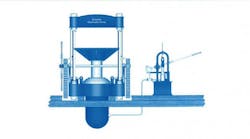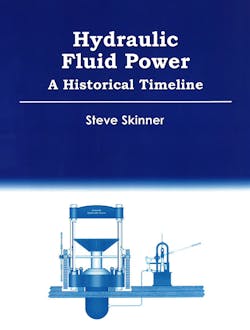Background of all the familiar people — and many relatively unknowns — who made important discoveries and invented or improved components are described chronologically and peppered with interesting historical and personal details. For example, Skinner attributes the definition of fluid pressure to Simon Stevin 60 years before Blaise Pascal would publish his definitive findings. Generous use is made of colorful, modern renditions of artists’ renditions, reproduced technical drawings, and restored photographs.
The soft-cover book contains 126 pages and although it somewhat emphasizes hydraulics technology in the UK, it does provide credit to those in other countries. A notable example is acknowledgement of the accomplishments of American John Pippenger, a founding member of the International Fluid Power Society, author, teacher, and company executive.
Hydraulic Fluid Power — A Historical Timeline is available for purchase from Lulu Enterprises Inc., Raleigh, N. C. To order, call (844) 212-0689 or click here.


